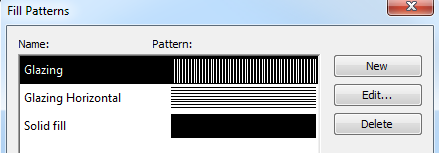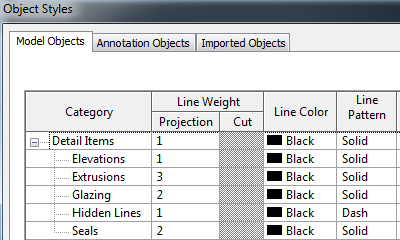 This post is the first of a 3 PART SERIES where I discuss the concept of budget Revit Families that are currently available for purchase on the web.
This post is the first of a 3 PART SERIES where I discuss the concept of budget Revit Families that are currently available for purchase on the web.
- In this blog post (Part 1) I want to begin the discuss budget Revit families, in general terms, and reflect on what might be fair to expect from a Revit family that can cost as little as $3 or $5, up to $25 per family.
- Part 2 – I will outline the technical considerations that budget Revit families should take into account in my view.
- Part 3 – In the last post of this series I will review a specific range of budget Revit content that is currently available for purchase on the web.
- I will release the entire 3 PART BLOG POST SERIES over a period of about 4-6 weeks to allow readers to have time to read and digest the content of each post before publishing the next associated blog post.
CONTEXT
So how has this topic come about in that sweet busy head of mine?
Recently we purchased a large batch of Revit content from a company that specializes in budget Revit content that are in fact Manufacture specific. It was certainly not the first range of budget content that I had come across over the years, nor would it be the last. I saw a lot of room for improvement across a range of more than 250 families and it got me thinking…..
How do I review a batch of content on my blog that is so cheap to purchase without coming across as an absolute tyrant? After all, most of the Revit families that we had purchased had cost the same as a single hamburger.
Initially I felt bad for my noticeable irritation as I started to audit some of the budget families that we had purchased. Most of my frustration stemmed from the time-consuming ramification and unnecessary re-work that would be needed to integrate these families into our library. There was a lot of clean-up to be done simply because these families were made in a way that seemed to suggest that the content creator/s had not been not aware of the subtleties of the Revit system integration process.
I noticed myself justifying the possible reasons why some short cuts might have been taken. “Don’t be so harsh, after all it only cost $5 Michelle!” I thought. I knew full well that some families would have taken an hour or perhaps even a few hours to make so $5 was still great value. But how much work would it take to get them up to our company standard?
I reflected some more as I cleaned up yet another family….
IS BUYING A $5 REVIT FAMILY THE SAME AS BUYING A HAMBURGER?
Comparing a budget Revit family purchase with a hamburger was perhaps a gross simplification on my part. After all the burger could only be sold once and my comparison did not take into consideration the true income potential of selling the same Revit family multiple times to different clients.
HOW MANY TIMES CAN YOU SELL A $5 REVIT FAMILY?
I appreciate that with this type of business model the content creator assumes all the risk. He or she has no idea if they will in fact sell their family 1, 5, 20 or 100 times.
I thought to myself ,“I imagine that the trick of course is to secure repeat business and social media could be used to boost sales if your content is well made and cheap”.
Don’t get me wrong – I am not proposing that it’s a get-rich-quick scheme. In fact I suspect that the effort in building a website and making the Revit content under such conditions of risk might not always be worth it. But perhaps it could be lucrative – if your product was renowned for being consistent, excellent quality and offering good value and benefits for integration?
So, if I take into account the fact that these families can be re-sold multiple times – can I then justify my personal expectation that even budget Revit families must meet a bare minimum quality/ benchmark or standard?
I feel that it is safe for me to suggest that if a content creator becomes known for consistent quality content then there should be enough money to be made, per family, over time to warrant to additional time that may be required in creating a professionally made product. After all buying something that has been well made and at a cheap price can be more time efficient and cost-effective (most of the time) than having staff create the content themselves in the midst of project deadlines. But if the budget content is made with little understanding of how Revit system design is actually meant to work then the process of buying such cheap content might potentially become counter-productive.
Part of my frustration about the quality of budget Revit content arises from the fact that many of the details that take time to repair on budget families would take very little extra time for the content creators to do ‘right’, the first time round. ( E.g. Defining a Subcategory, Material or Family Type name takes as long regardless if you name it poorly or not.) In my experience the time that it takes to make a Revit Family half heartedly is not much less than making a Revit family well. BUT if a Revit family has been made with competence and Revit System empathy the added value to the consumer is ENORMOUS!
MY POTENTIALLY CONTROVERSIAL ‘TRUTH’
So, I would like to declare that I think ANY Revit content sold should at least meet a minimum quality standard regardless of price per unit.
WHAT IS FAIR TO EXPECT FROM A BUDGET REVIT FAMILY?
So you ask… “Michelle, what do you think is a bare minimum that any content should have in order to be a product of professional integrity and great value?”
In PART 2 of this blog post series I will try to cover some of the basics of what I would consider my personal bare-minimum-benchmark for any content that is said to be professionally made – regardless of the purchase or commission price that is paid. It is my hope that more industry experts will begin to realize that they can secure commercial leverage from creating Revit content that is consistently made that is specifically designed to be easy to integrate into customized company Revit systems.
“As I see it Design, Documentation and Engineering firms are becoming more informed about how to customize their own company Revit and BIM standards. They are becoming increasingly selective about the content that they allow into their projects and libraries. Sure – we still have many Revit cowboys in the industry who are ‘just winging it’ and allowing any quality families into their projects and libraries.
BUT….THE GAP between the Revit cowboys and informed Revit/Bim firms (who are investing in customized Revit systems) is INCREASING.
And in my view: It is that ever-increasing GAP that will give high performance Revit/BIM firms commercial leverage in years to come. ”
~ Michelle Van Kolck
It is for this reason very reason that I believe that is becoming more important that Manufacturers and Professional Content Creators educate themselves about what the industry truly needs in terms of Revit family functionality. Overcomplicated content that is problematic to use or integrate is simply not what our industry needs or wants in terms of representing Manufacture specific content in our project models. Professional content creators that are paid to create content that will be publicly available should focus on improving the speed and efficiency with which Design and Engineering firms can integrate and tweak their content into their company specific Revit/BIM systems.
 Let’s see if the grass is greener in my next post…..
Let’s see if the grass is greener in my next post…..
Cheers, Michelle
~ ~ ~ ~ ~ ~ ~ ~ ~ ~ ~ ~ ~ ~ ~ ~ ~ ~ ~ ~ ~ ~ ~ ~ ~ ~ ~ ~ ~ ~ ~ ~ ~ ~ ~ ~ ~ ~
Please click LIKE and/or SHARE this post if you enjoy these blog posts. It makes my day a bit brighter and it helps make it feel like the effort taken to prepare these posts might be worth it ;-)
















You must be logged in to post a comment.